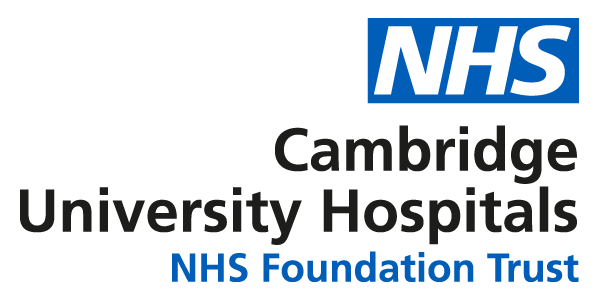What is an acute subdural haematoma?
A subdural haematoma is an accumulation of fluid and blood between the membranes covering the brain (dura and arachnoid mater). The bleed originates due to damage to the veins that lie between these two brain coverings. The blood that develops causes swelling and pressure on the brain, which can lead to physical symptoms and potential further damage.
Symptoms
Most aSDHs are sustained from a trauma. This can range from a fall from standing, fall from a height or a road traffic collision or assault. Common symptoms that occur are slurring of speech, headaches, and increased drowsiness/unconsciousness. People with large bleeds that are causing high pressure in the brain are admitted to our Neurosciences Critical Care Unit (NCCU) for monitoring and treatment.
How common is it?
Can happen to all ages but more common in the younger generation. Approximately 1.4 million people in England and Wales attend A&E following head injury of which half are under 15 years old. From the 1.4 million, 200,000 are admitted into hospital for treatment or observation. Ages range from 16-20 and the over 75s, males being more common than females.
Treatment
Most people who come in following aSDH will have a CT (computerised tomography) scan. This is the fastest and quickest way to achieve a diagnosis and plan for further treatment. More CT scans may be requested throughout your stay to monitor swelling and size of bleed. MRI (magnetic resonance imaging) scans may also be requested to look for more specific potential damage. If bleeds are small, observations for a period of time on the ward, until the blood dissolves, may be sufficient.
If the bleed is causing damage or restrictions on the rest of the brain medical management is also administered. Medical management includes putting the patient to sleep and organ function is managed by machine such as a ventilator. It will including drug administration for blood pressure monitoring, giving specific fluids to help control the pressure inside the brain. Medical management is mainly to reduce the pressure in the brain. This is normally done on our Neurosciences Critical Care Unit (NCCU) as you will need constant monitoring.
Another option, if the bleed is causing damage or restrictions on the rest of the brain, is an operation to remove the blood. This is done by removing a part of the skull (craniectomy) and evacuating the clot in an operating theatre. If the surrounding swelling in the head is causing pressure as well, surgeons may decide not to put the skull bone back, so as to allow the brain time to recover.
Intracranial pressure (ICP)
ICP is the pressure inside the head. This should be well controlled, especially if there has been a bleed on the brain, as this acts as a foreign object that would increase pressure. The team will use medicines to help control the pressure and keep it at a safe level. These medicines include, but are not limited to, blood pressure support, keeping the patient sedated and controlling temperature of your body. In some cases, a wire is inserted into the intracranial space to help measure the ICP and give our teams a numeric value to monitor.
Post craniectomy
If your bone was not put back, you may require a metal plate, usually made from titanium, to be put in its place. This is called a ‘cranioplasty’. This may take some time, as we want to allow time for any swelling to go down before putting the plate in. The plate is specifically made for you. It may be carried out on a separate admission.
Recovery
Every patient is different. Your recovery will depend on a variety of factors, such as size of bleed, any other injuries that may have been sustained at the time of trauma, and any co‑morbidities (complicating factors). If it was a small bleed and you were admitted for monitoring, it is possible that you can return home after a few days. However, you may have headaches and may need time to recover. If the bleed was quite large and you needed extensive time on our critical care unit with medical interventions, outcomes may vary. Some patients may take a long time to recover and require specialist rehabilitation which our teams will talk through with you if required. It is important to discuss timeframes with your medical team for further details on your specific case.
If the bleed is large, or you require an operation, you will remain in hospital for specialist care. This can happen on our Neurosciences Critical Care Unit (NCCU), one of our three neurosurgical wards, or on our neuro rehabilitation ward. This system can also be used as a step down transfer from critical care to acute ward setting to rehabilitation. This is part of our major trauma pathway.
Upon going home it is important to discuss with the DVLA about driving. Depending on your injury you may not be eligible to drive for a period of time; your medical team can advise but this is at discretion of the DVLA.
For families, and for patients that do go home, we have community support such as Headway which are great to get in touch with for information, support, help and advice.
We are smoke-free
Smoking is not allowed anywhere on the hospital campus. For advice and support in quitting, contact your GP or the free NHS stop smoking helpline on 0800 169 0 169.
Other formats
Help accessing this information in other formats is available. To find out more about the services we provide, please visit our patient information help page (see link below) or telephone 01223 256998. www.cuh.nhs.uk/contact-us/accessible-information/
Contact us
Cambridge University Hospitals
NHS Foundation Trust
Hills Road, Cambridge
CB2 0QQ
Telephone +44 (0)1223 245151
https://www.cuh.nhs.uk/contact-us/contact-enquiries/

